Historical Landmarks of Chiang Mai: A Journey Through Time
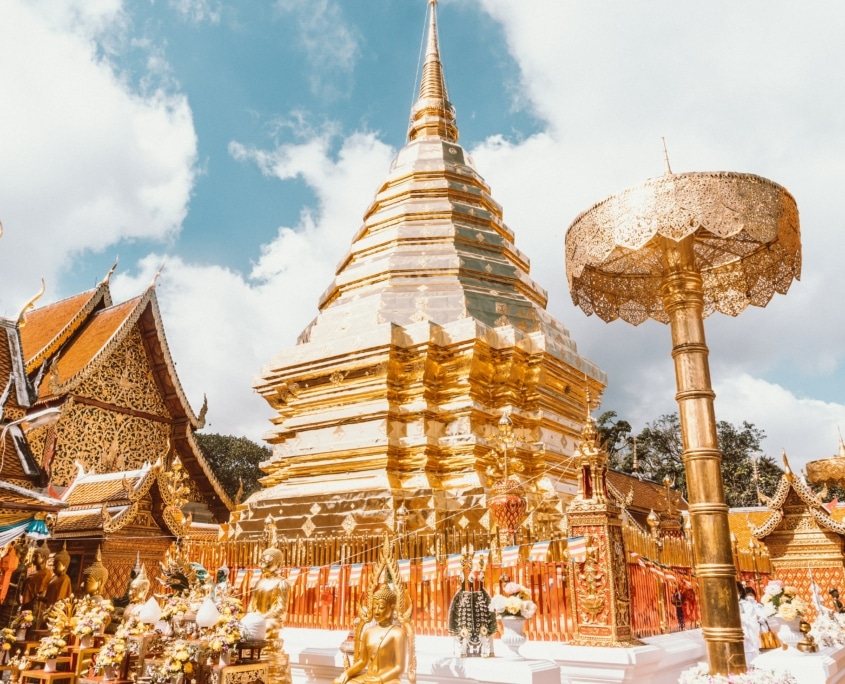
Unearthing Time: Chiang Mai’s Historical Canvas
Historical Landmarks of Chiang Mai: A Journey Through Time – In the heart of Northern Thailand lies Chiang Mai, a city where every cobblestone and corner narrates tales of its glorious past. Its historical landmarks stand as sentinels to time, each echoing stories from the ancient Lanna Kingdom to the present. As travellers navigate through this enchanting city, they are invited to embark on a journey through time, witnessing the harmonious blend of the old and the new. With this guide, dive deep into Chiang Mai’s rich tapestry of history, discovering the significance and allure of its most iconic landmarks.
Ancient Temples:
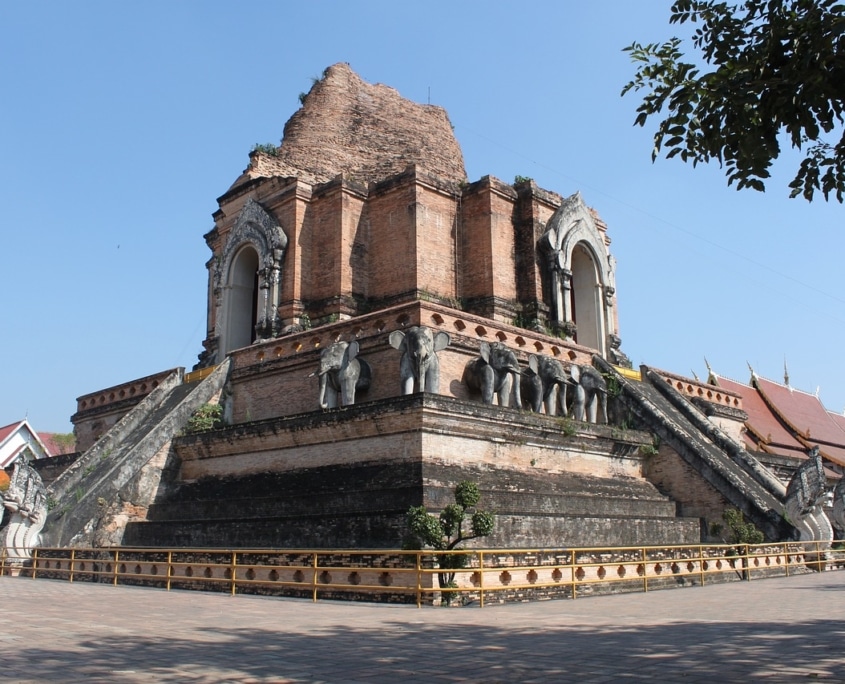
Chiang Mai, an ancient city nestled in the mountainous region of Northern Thailand, is renowned for its temples that stand as pillars of spiritual and historical significance. With over 300 temples gracing its streets and countryside, Chiang Mai offers a journey into Thailand’s rich Buddhist tradition.
Wat Phra Singh, situated in the heart of the old city, is a prime example of Lanna architecture. Its exquisite golden chedi (stupa) houses a revered Phra Singh Buddha image, drawing devotees from all over the country. The murals within the temple vividly depict scenes from the Jataka tales and the life of Buddha, offering a visual treat and an educational experience for both devotees and tourists.
Just a short distance away lies Wat Chedi Luang, an imposing structure that has seen centuries pass by. While its large chedi was partially damaged due to an earthquake in the 16th century, its majesty remains undeniable. The temple grounds buzz with activity, especially during Buddhist festivals when the air is thick with the aroma of incense and the resonating sound of temple bells.
On the outskirts of Chiang Mai, Wat Umong offers a unique experience with its tunnel-like chambers, hence its moniker ‘The Tunnel Temple’. It’s said that the tunnels were built to provide monks a retreat from bustling city life, a place where they could meditate in peace. The temple is surrounded by a serene lake, where turtles and fish provide quiet company to visitors.
Wat Suan Dok, another gem, stands with its unique open-sided wihan (prayer hall). The temple grounds house several white-washed mausoleums containing the ashes of Chiang Mai’s former royalty, a testament to the city’s regal history.
Exploring Chiang Mai’s temples is akin to stepping into pages of a living history book, where stories of faith, artistry, and royalty come alive with each step.
Historical Fortresses and Walls: Tales of Protection and Grandeur
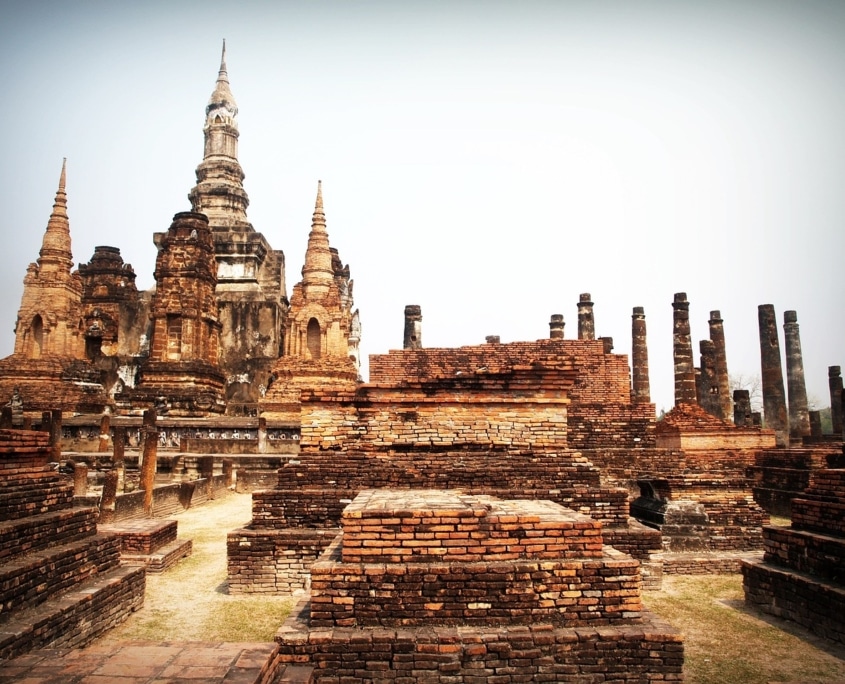
Chiang Mai, known as the “Rose of the North,” has its historical heart encapsulated within ancient fortresses and walls. These formidable structures offer a testament to the city’s strategic importance and the lengths its rulers went to for its defence.
The Old City Walls: The first thing that may catch a traveller’s eye is the square-shaped Old City Wall, which once served as the formidable boundary of Chiang Mai. These walls, interspersed with moats, once provided a dual layer of protection against potential invasions. Many of the original city gates, such as Tha Phae Gate, remain intact and stand as proud reminders of the city’s past. Tha Phae Gate, in particular, is a hub of activity and often hosts cultural events, further bridging the past and present.
Fortresses and Bastions: At intervals along the old walls, ancient bastions or fortresses can be found. These served as watchtowers and defence points, housing soldiers, weapons, and provisions. Some of the most notable include the Ku Huang Corner and the Jaeng Sri Phum. A visit to these bastions is like stepping back in time, with each brick and stone echoing tales of battles, strategies, and the daily lives of the guards who once patrolled them.
Modern Appreciation: Today, while they may no longer serve a defensive purpose, these walls and fortresses offer both locals and tourists a tangible link to Chiang Mai’s illustrious past. Many parts of the walls have undergone restoration, ensuring that they continue to stand as enduring symbols of the city’s rich history.
Walking along these ancient boundaries, visitors can experience a mix of tranquillity and reverence, imagining the bustling activities of trade, diplomacy, and defence that once took place within and around them.
Museums and Galleries: Windows into Chiang Mai’s Storied Past
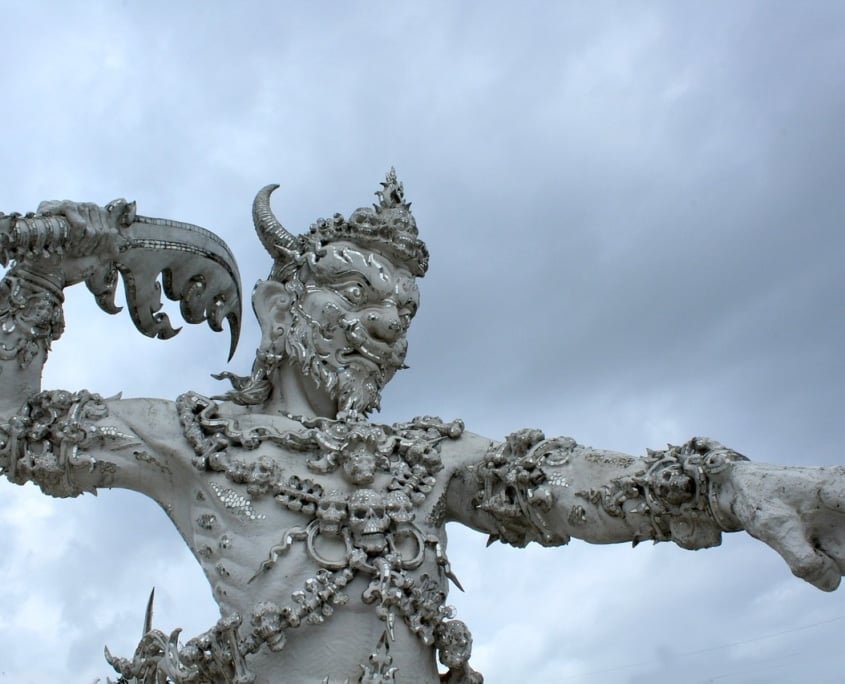
In the bustling streets of Chiang Mai, amidst modern shops and cafes, lie museums and galleries that offer a glimpse into the city’s profound history and cultural heritage.
Chiang Mai National Museum: This museum, located near the Super Highway, is a treasure trove of Lanna history. With its intricately designed exhibits, it unravels the tale of the ancient Kingdom of Lanna, its rulers, and the evolution of its culture. Artefacts like weaponry, jewellery, and ceremonial items reflect the grandeur and depth of this age-old civilization.
Chiang Mai City Arts & Cultural Centre: Situated at the heart of the city, this centre is an interactive museum capturing the essence of Chiang Mai’s history, from its establishment to the present day. Using modern technologies, it offers immersive experiences that transport visitors through various eras, introducing them to significant events, traditions, and local folklore.
Tribal Museum: Chiang Mai’s rich tapestry includes the influence of various hill tribes. The Tribal Museum in Ratchamangkla Park showcases the cultures, lifestyles, and crafts of these tribes. Each tribe, from the Hmong to the Karen, has its unique traditions, dresses, and artefacts, and this museum beautifully displays this diversity.
Art in Paradise: A contemporary addition, Art in Paradise, offers a different kind of historical exploration. It’s an interactive 3D art gallery, allowing visitors to become a part of whimsical, historically-inspired artworks. While not a traditional museum, it offers a playful connection to history and culture.
Exploring these museums and galleries, visitors not only gain knowledge but also develop a deeper appreciation for Chiang Mai’s multi-faceted identity. Each visit becomes a journey, linking past legacies with present experiences.
Traditional Villages: Timeless Echoes of Lanna Heritage
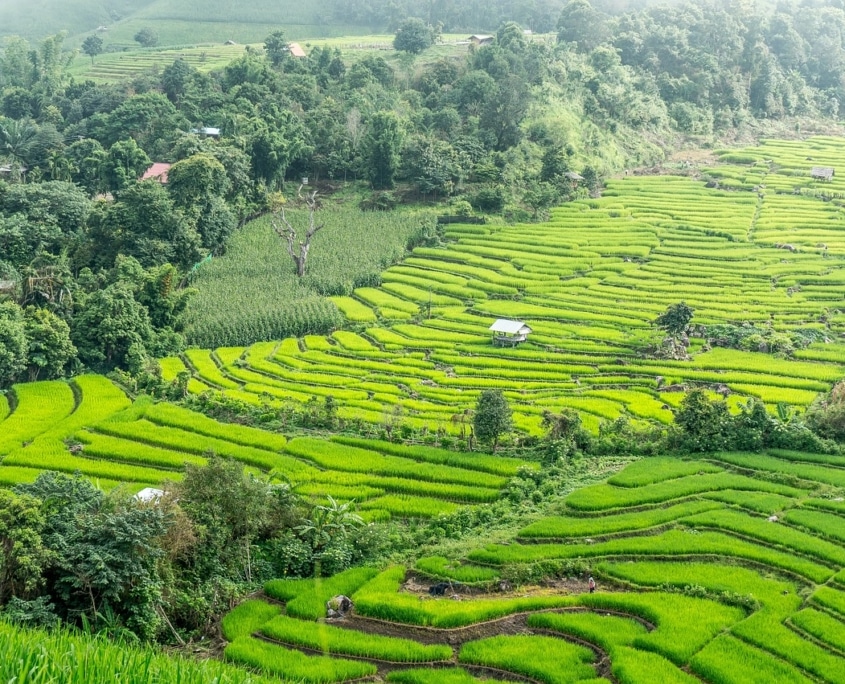
When one treads the pathways of Chiang Mai, beyond its bustling urban life, there are traditional villages which have managed to retain their old-world charm, resonating the voices of ancient Lanna.
Baan Tong Luang: Nestled amidst the serene greens, this village is home to several hill tribes, including the renowned ‘Long Neck’ Karen tribe. It’s a living museum where one can witness intricate crafts, traditional huts, and the daily rhythms of life that have remained unchanged for centuries. The vibrancy of traditional costumes, soulful tribal songs, and intricate handicrafts make it a journey back in time.
Baan Phor Liang Meun’s Terra Cotta Arts: A village dedicated to the age-old art of terracotta. Every corner of this quaint village is adorned with statues, pottery, and sculptures, telling tales of ancient myths and legends. As you watch artisans moulding, carving, and painting, you are transported to an era where art was a way of life.
Baan On Tai: This village is the epitome of Lanna craftsmanship. It is renowned for its handmade Sa paper, which is used in creating lanterns, umbrellas, and various other crafts. The beauty of Baan On Tai lies not just in its products but in its process – the traditional ways in which each item is crafted with dedication and skill.
Wiang Kum Kam: Although now in ruins, this underground ancient city to the south of modern-day Chiang Mai stands as a testament to the city’s rich history. Visitors can explore ancient temples, stupas, and structures, getting a feel of what life might have been like in this ancient Lanna capital.
These villages, with their authentic atmospheres and crafts, offer visitors an unparalleled immersion into the heart of Lanna culture, making them an essential part of any historical journey through Chiang Mai.
Historical Parks and Monuments: Standing Testimonies of Chiang Mai’s Past
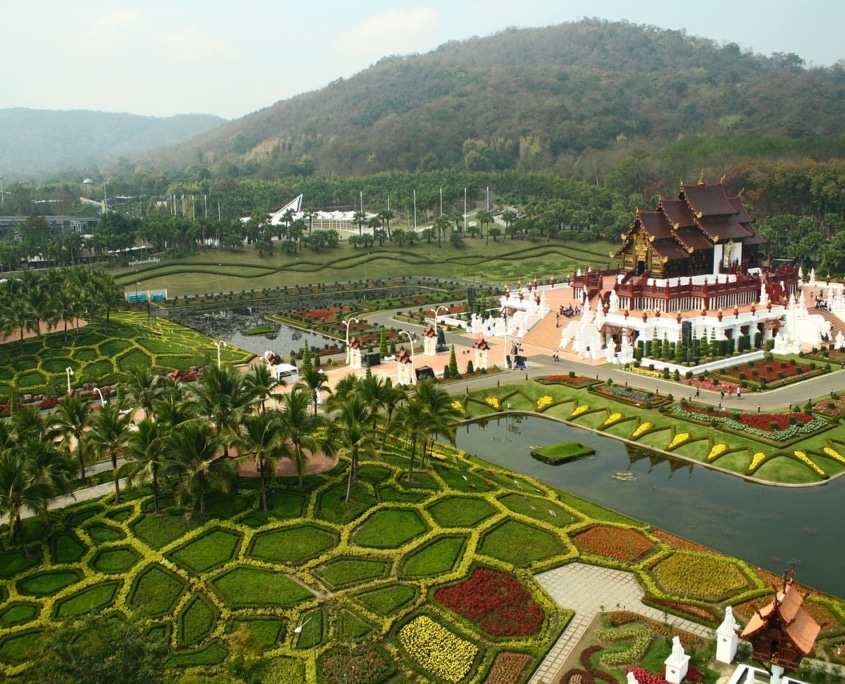
Chiang Mai, with its diverse history, is dotted with historical parks and monuments that not only enhance the city’s skyline but also narrate tales of bygone eras.
Thapae Gate: This ancient gate is one of Chiang Mai’s most iconic landmarks. Constructed as a part of the original city walls, Thapae Gate has witnessed countless historical events, from royal processions to trading caravans. Today, it serves as a focal point for cultural festivities, ensuring that history and modernity coalesce seamlessly.
Three Kings Monument: Nestled in the heart of the city, this monument pays homage to the founders of Chiang Mai: King Mengrai, King Ramkhamhaeng, and King Ngam Muang. Their collaborative efforts in establishing the city are immortalised in bronze, reminding visitors of the unity and vision that birthed Chiang Mai.
Wiang Kum Kam: Located on the outskirts, this historical park was once a flourishing ancient city before Chiang Mai was established. Today, it offers a labyrinth of ruins, from temples to sculptures, showcasing the architectural brilliance of the Lanna Kingdom.
Chedi Luang Temple Complex: Beyond its religious significance, this temple complex offers an insight into the architectural transitions that Chiang Mai has undergone. The towering stupa, albeit partially damaged in an earthquake, stands as a testament to the city’s resilience and artistic evolution.
San Kamphaeng Hot Springs: While primarily known for its therapeutic waters, the area also holds historical significance. The beautifully landscaped park surrounding the springs has statues and structures detailing the legends associated with the site.
Walking through Chiang Mai, every stone, monument, and historical park whispers tales of the city’s vibrant past, making it a treasure trove for history enthusiasts.
Unravelling the Tapestry of Time: The Allure of Chiang Mai’s Historical Landmarks
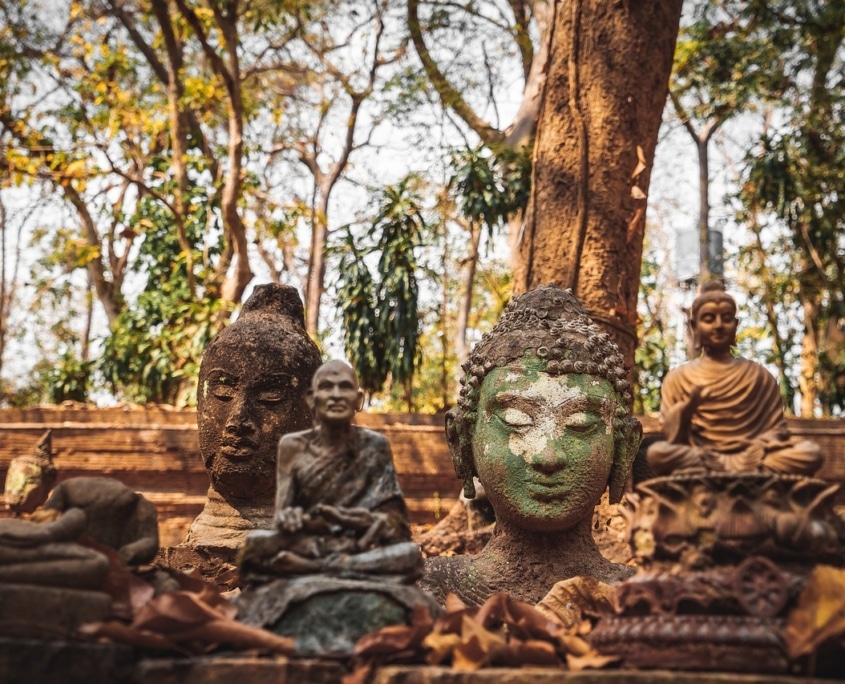
History isn’t just about events; it’s about the stories, the influences, and the layers of culture and civilisation that have shaped societies. And in Chiang Mai, every historical landmark offers a unique window into a vivid tapestry of tales that span centuries.
- A Journey to the Roots: The landmarks of Chiang Mai are more than mere tourist spots. They’re chapters in a book, each revealing a different aspect of the city’s evolution. From the days of the Lanna Kingdom to its contemporary status as a global travel destination, visitors can traverse time, immersing themselves in the epochs that have defined this Northern Thai jewel.
- A Connection to Traditions: In a world dominated by rapid change, the historical landmarks of Chiang Mai provide an anchor to traditions and customs. They remind us of the rituals, ceremonies, and beliefs that are still very much alive and respected in this region.
- Architectural Wonders: Beyond the stories, the aesthetics of these landmarks offer insights into the artistic sensibilities of the eras they hail from. Intricate carvings, stately structures, and design elements that are often lost in modern architecture can be admired in their full splendour here.
- The Local Perspective: Interacting with the locals around these landmarks provides a deeper understanding. The stories passed down through generations, folklore, and legends breathe life into the bricks and stones, transforming them from mere structures to living entities.
- Cultural Immersion: For travellers keen on a holistic experience, these landmarks offer more than sightseeing. The ceremonies, festivals, and events centred around them provide an authentic taste of Chiang Mai’s cultural vibrancy.
In essence, the historical landmarks of Chiang Mai offer an unparalleled journey – not just through physical spaces but through time, tradition, and tales that enrich every traveller’s experience.
Frequently Asked Questions: Diving Deeper into Chiang Mai’s Historical Landmarks
- What is the oldest temple in Chiang Mai?
The Wat Phra That Doi Suthep, perched atop a mountain, is one of the most ancient and revered temples in Chiang Mai. While it isn’t the absolute oldest, it’s undoubtedly among the most significant, with origins tracing back to the 14th century.
- Are there guided tours available for Chiang Mai’s historical sites?
Yes, several tour operators in Chiang Mai offer guided tours, which often include knowledgeable local guides who can provide deeper insights into the history and significance of each landmark.
- How many historical landmarks are there in Chiang Mai?
Chiang Mai boasts a rich tapestry of history, with over 300 temples alone. This doesn’t include the various forts, museums, traditional villages, and monuments, making it a treasure trove for history enthusiasts.
- Is it expensive to visit these historical landmarks?
While many temples and landmarks are free to visit, some may have a nominal entrance fee. However, these fees are generally affordable and contribute to the maintenance and preservation of these sites.
- Can I visit multiple landmarks in a single day?
Given Chiang Mai’s compact nature, it’s feasible to visit multiple landmarks in one day. However, to genuinely appreciate each site’s history and significance, it might be best to spread your visits over a few days.
- What’s the best time of year to explore Chiang Mai’s historical sites?
While Chiang Mai is captivating year-round, the period between November and February is considered the best due to its cooler climate, making it comfortable to explore outdoor landmarks.
Experience Chiang Mai’s Living History
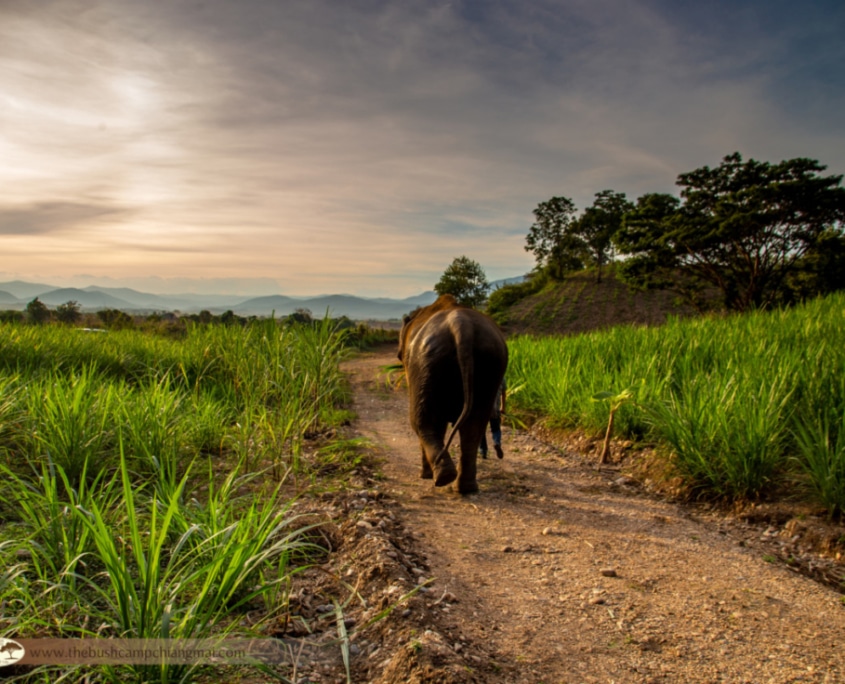
Dive deep into the tales of ancient kingdoms, religious devotion, and the ever-evolving culture of Northern Thailand. From the serene courtyards of age-old temples to the formidable walls echoing stories of bygone eras, every corner of Chiang Mai promises an intimate encounter with history. Don’t let these stories remain as tales told by others. Embark on your own journey, walk the paths of ancient royalty, and let Chiang Mai’s history unveil itself to you. Begin your exploration today and cherish memories that will last a lifetime.
Book Your Historical Journey with The Bush Camp Chiang Mai Now >>
Reliving the Legacy of Chiang Mai: Historical Landmarks of Chiang Mai
As we traverse through Chiang Mai’s history, it becomes evident that this city is more than just a tourist destination; it’s a living testament to Thailand’s rich cultural tapestry. The ancient temples, fortresses, and traditional villages offer more than just visual splendour—they offer stories, lessons, and reflections of eras gone by. To truly appreciate Chiang Mai is to immerse oneself in its historical landmarks, and understand the spirit of the Lanna people and their indelible mark on Thai history. So, the next time you step into Chiang Mai, remember you’re not just stepping into a city but into a story that has been centuries in the making.




